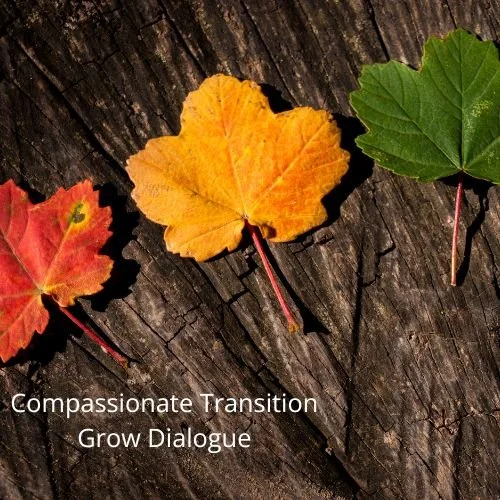Charting the Path Towards Compassionate Employee Turnover
When the rapid pace of change is the only constant, the quest for organizational excellence is not just about staying ahead in innovation but also about fostering a culture of resilience, empowerment, and compassion. The journey of The Guild, facilitated by Grow Dialogue, exemplifies a pioneering approach to employee role change or dismissal – compassionate transition. This strategy is not merely a process but a profound shift towards nurturing a collaborative, empowered, and adaptive team culture. This post aims to shed light on the essence of compassionate transition, highlighting its critical role in the evolution of workplace dynamics and its promising future in shaping collaborative organizational structures. Let’s get a glimpse into the process that will not just change organizations, but revolutionize them.
Empowering Change: The Compassionate Transition Journey
The Guild faced a pivotal moment, challenged by lack of internal cohesion and mission impact, necessitating the consideration of transitioning individuals out of roles or out of the company. This was not about quick fixes but a fundamental change rooted in empathy, accountability, and strategic foresight. Grow Dialogue stepped in to help chart a course through this process, tailored to reinforce The Guild’s core values while enhancing its organizational resilience and team empowerment. The essence of compassionate transition lies in its approach to addressing challenges – not through conventional top-down mandates but through co-created solutions that honor every individual’s dignity and role within the organization.
Why Compassionate Transition?
At its core, compassionate transition acknowledges that the strength of an organization lies in its people and their interconnectedness. It’s about moving away from traditional, often punitive change processes to a more empathetic, inclusive approach. This method is not just about ensuring smooth role transitions but about fostering an environment where challenges are met with collective accountability and strategic planning. The benefits? Enhanced team cohesion, organizational agility, and value alignment that amplifies mission-driven efforts – all crucial for thriving organizational cultures.
A Peek into the Process: Crafting a Culture of Empathy and Excellence
The process involves several key components: crafting compassionate transition protocols, reinforcing collective accountability, enhancing strategic planning, and fostering authentic dialogue. Each element is designed not only to address immediate challenges but to lay a foundation for sustained growth, resilience, and impact. Team members at The Guild shared how rewarding it was to reach a resolution that felt good for everyone involved including those whose roles were transitioned. Through strategic interventions and dedicated collaboration, The Guild underwent a transformation that not only resolved its immediate challenges but also empowered it to forge a stronger, more cohesive future.
The Future is Compassionate
The story of The Guild is not an isolated case but a reflection of a broader shift towards more humane, equitable, and collaborative workplace cultures. Compassionate transition is leading the way for organizations to reimagine their structures, from hierarchical to flat, from boss-driven to team-empowered. This approach heralds a new era for worker-owned co-ops like The Guild and organizations seeking to flatten their operations, ensuring that change is not just managed but embraced with empathy, dignity, and collective strength.
The story of The Guild, facilitated by Grow Dialogue, is a testament to the transformative power of compassionate transition. It’s a strategy that goes beyond mere organizational change; it’s about cultivating a culture where every individual feels valued, heard, and empowered to contribute to the collective vision. As organizations look towards the future, the principles of compassionate transition can guide them towards a more adaptive, resilient, and compassionate team culture. Let’s embrace this change, not just as a necessity but as a foundation of thriving organizations.

